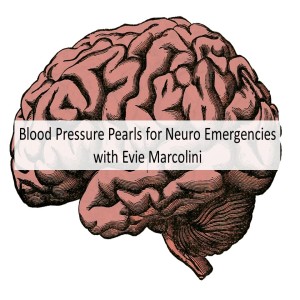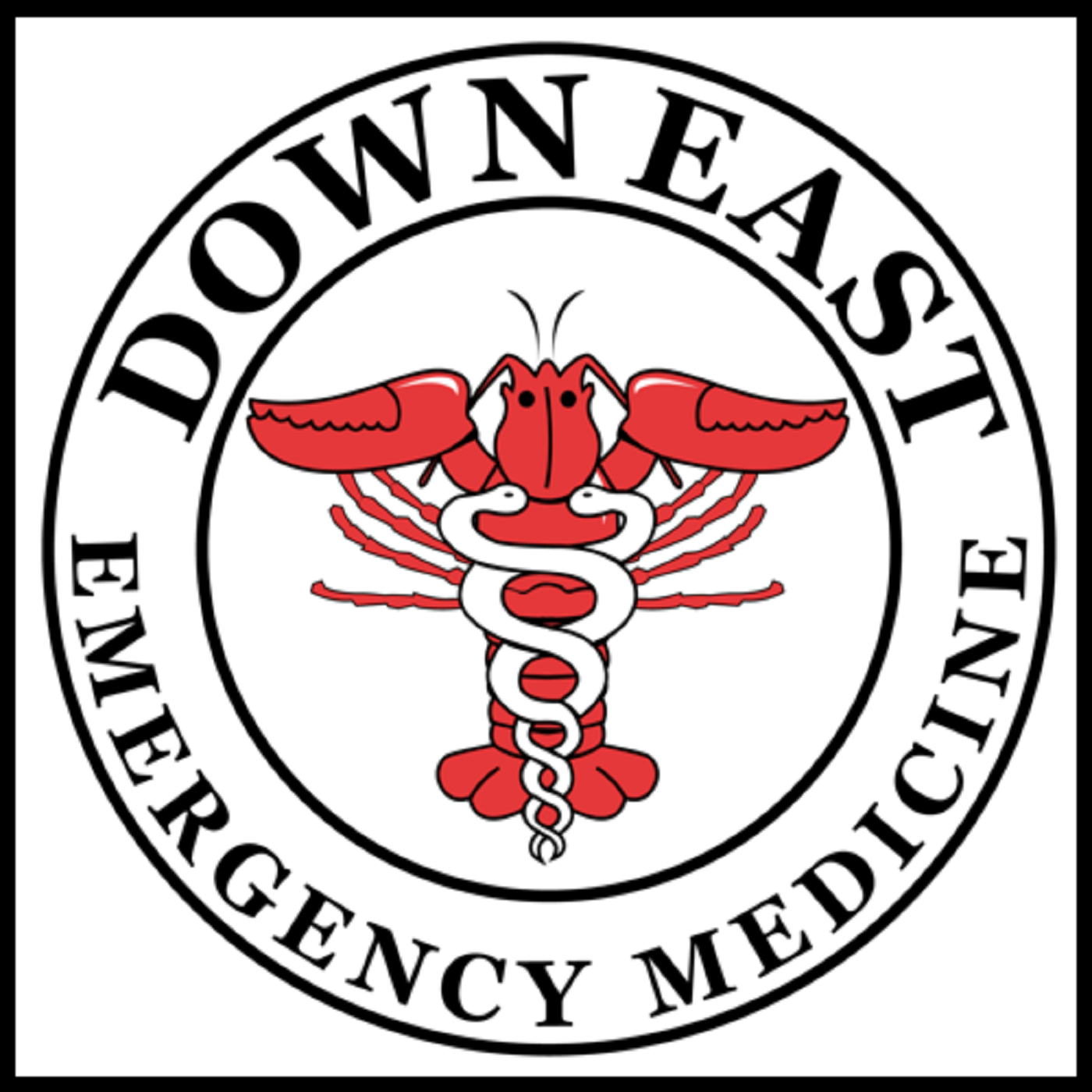Episodes

Wednesday Jan 08, 2020
Blood Pressure Pearls for Neuro Emergencies with Evie Marcolini
Wednesday Jan 08, 2020
Wednesday Jan 08, 2020
We have a lot of numbers to remember when it comes to the care of the brain injured patient. From subarachnoid hemorrhage to traumatic brain injury, it can be hard to keep all the numbers straight. We sat down with neuro-intensivist Dr. Evie Marcolini to discuss blood pressure targets for these different disease processes.
Check out our post on the Down East EM blog for more
SUMMARY OF RECOMMENDATIONS AND ASSOCIATED LITERATURE
Subarachnoid Hemorrhage (SAH)
Systolic blood pressure (SBP) to <160 (AHA recs) [1]
Neurosurgeons/neurointensivists like it <140 to decrease rebleed risk.
Evie Pearl: SAH often happens in younger, healthy women who can tolerate a lower BP and so if you go below 140 even, and the patient tolerates it, that is ok.
Intracerebral Hemorrhage
SBP <180 (Atach 2) [2]
Evie Pearl: BP goal depends on baseline for patient.
-Elderly, comorbid with baseline elevated BP aim higher (<180)
-Younger healthy patients without pre-existing hypertension, aim lower (ex <160)
Acute Ischemic Stroke
TPA Candidate <185/110 (AHA recs) [3]
Non-TPA Candidate <220
Evie Pearl 1: remember we are trying to keep BP on the higher side to perfuse the penumbra, but the larger the core infarct the higher the risk of reperfusion hemorrhage.
Evie Pearl 2: do a neuro exam on the patient sitting up, then lie them flat and repeat the exam. If it improves, the stroke is BP dependent and you may want the patient to run on the higher side, let them lie flat, or give some gentle fluids.
Traumatic Brain Injury
SBP >110 age 15-49 or >70 (Brain Trauma Foundation) [4]
SBP > 100 age 50-69
Evie Pearl: These numbers are based on the fact that we do not have robust data on specific BP parameters. Newer data (Spaite paper [5]) is showing that not only is avoiding hypotension necessary, but allowing BPs to run higher (up to 130) may be of benefit.
References
1. Connolly ES Jr, Rabinstein AA, Carhuapoma JR, Derdeyn CP, Dion J, Higashida RT, Hoh BL, Kirkness CJ, Naidech AM, Ogilvy CS, Patel AB, Thompson BG, Vespa P; American Heart Association Stroke Council; Council on Cardiovascular Radiology and Intervention; Council on Cardiovascular Nursing; Council on Cardiovascular Surgery and Anesthesia; Council on Clinical Cardiology. Guidelines for the management of aneurysmal subarachnoid hemorrhage: a guideline for healthcare professionals from the American Heart Association/american Stroke Association. Stroke. 2012 Jun;43(6):1711-37. doi: 10.1161/STR.0b013e3182587839. Epub 2012 May 3.
2. Qureshi AI, Palesch YY, Barsan WG, Hanley DF, Hsu CY, Martin RL, Moy CS, Silbergleit R, Steiner T, Suarez JI, Toyoda K, Wang Y, Yamamoto H, Yoon BW; ATACH-2 Trial Investigators and the Neurological Emergency Treatment Trials Network. Intensive Blood-Pressure Lowering in Patients with Acute Cerebral Hemorrhage. N Engl J Med. 2016 Sep 15;375(11):1033-43. doi: 10.1056/NEJMoa1603460. Epub 2016 Jun 8.
3. Powers WJ, Rabinstein AA, Ackerson T, Adeoye OM, Bambakidis NC, Becker K, Biller J, Brown M, Demaerschalk BM, Hoh B, Jauch EC, Kidwell CS, Leslie-Mazwi TM, Ovbiagele B, Scott PA, Sheth KN, Southerland AM, Summers DV, Tirschwell DL. Guidelines for the Early Management of Patients With Acute Ischemic Stroke: 2019 Update to the 2018 Guidelines for the Early Management of Acute Ischemic Stroke: A Guideline for Healthcare Professionals From the American Heart Association/American Stroke Association. Stroke. 2019 Dec;50(12):e344-e418. doi: 10.1161/STR.0000000000000211. Epub 2019 Oct 30.
4. Carney N, Totten AM, O'Reilly C, Ullman JS, Hawryluk GW, Bell MJ, Bratton SL, Chesnut R, Harris OA, Kissoon N, Rubiano AM, Shutter L, Tasker RC, Vavilala MS, Wilberger J, Wright DW, Ghajar J. Guidelines for the Management of Severe Traumatic Brain Injury, Fourth Edition. Neurosurgery. 2017 Jan 1;80(1):6-15. doi: 10.1227/NEU.0000000000001432.
5. Spaite DW, Hu C, Bobrow BJ, Chikani V, Sherrill D, Barnhart B, Gaither JB, Denninghoff KR, Viscusi C, Mullins T, Adelson PD. Mortality and Prehospital Blood Pressure in Patients With Major Traumatic Brain Injury: Implications for the Hypotension Threshold. JAMA Surg. 2017 Apr 1;152(4):360-368. doi: 10.1001/jamasurg.2016.4686.
Author: Jason Hine MD
Peer Review: Jeff Holmes MD


No comments yet. Be the first to say something!